Samsung Galaxy Note 3 Review
by Brian Klug on October 1, 2013 9:00 AM EST- Posted in
- Smartphones
- Samsung
- Mobile
- Android 4.3
- galaxy note 3
Display
One of my only issues with the Note 2 after using it for a long time was resolution. Although the move to a subpixel matrix with a full 3 subpixels per pixel on the Note 2 honestly really put most of my concerns at bay at launch, 720p started to feel limiting further on in that product’s cycle. Having more display area is great, however in Android what really matters is resolution. It was ironic having this phone with a huge display, but 720p resolution that was quickly eclipsed by devices with so much smaller displays. With the Note 3 Samsung moves to 1080p at 5.7 inches, up from the 720p at 5.5 inches in the Note 2, and 1280x800 at 5.3 inches from the original Note.
A question that immediately comes up every time we get a Samsung phone with AMOLED is first, what kind, and second what subpixel unit cell is behind it all, be it an RGB stripe or some other RG,BG alternative unit cell. In the case of the Note 3 we unsurprisingly see Samsung use the same unit cell as they did on SGS4, an offset pattern with green on one line and red and blue on another line. There’s a square blue subpixel with more area than the circular red and green subpixels as well to compensate for the difference in luminous efficiency of the material used in each subpixel type. As I’ve said in the past this isn’t PenTile (although people have started using that brand as a proxy for RG,BG alternatives) but something else entirely, but the ultimate end is still the same, two subpixels per unit pixel and not an RGB stripe.
The question for most normals then becomes – is this a big deal or can a normal human being see it? I’d argue that the subpixels on the Note 3, like the SGS4, are now small enough that they can’t be seen. I used to very picky about this, but I don’t find the new offset RG,BG pattern distracting at all on the Note 3. Subpixel size moves from just above 1 arcminute (1.006 and 1.073 for the Note and Note 2 respectively) down to 0.741 for the Note 3, making them small enough to in theory exceed human eye resolution of 1 arcminute. I won’t break out the huge table or chart, or go over all of that again, but it’s nice to see that finally be the case with the Note 3.
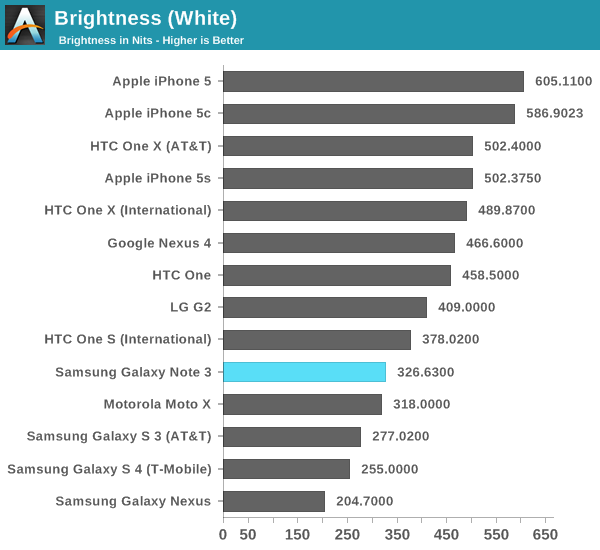
The Note 3 has the same display mode settings as we’ve seen in other generations, these mDNIe toggles allow some control over display color curves. They’re ultimately not a mitigation for Android’s lack of a real CMS and don’t completely solve the oversaturation issue that comes hand in hand with AMOLED’s different spectral curves, but they do help somewhat. These are unchanged as well from the SGS4 – Adapt Display is checked by default and will select which mode to use automatically for first party apps and a few others, but you can select between dynamic, standard, professional photo, and movie manually, which have different tunings for white point, gamut, and saturation. There’s also still the toggle for automatically adjusting screen tone depending on what’s being displayed.
Of the modes and configuration options available, I don’t doubt for a second that the most used one will be the defaults, however if you’re looking for the most sane from a color accuracy perspective it’s still Movie mode with the auto screen tone toggle unchecked. I gave Samsung the benefit of the doubt and ran all my measures in Movie mode as a result, but also took saturation measures of the other modes so you can see the difference in gamut and saturation with what you get under those.

The Standard and Dynamic modes have a ton of oversaturation, extending far beyond sRGB. In Dynamic mode we can also see some compression going on at the higher saturation levels, effectively blowing out those colors even more, with the second to last point almost on top of the last point. Pro Photo mode clamps down gamut and makes saturation a bit more linear, but has some odd other artifacts that show up. With the Movie selection made, the Note 3 display is considerably more controlled and linear, and makes a dramatic difference in how everything appears on the Note 3 during normal use. If you care about display really this is the only setting you should be using.
White point in movie mode is still bluer than I’d like at an average of just over 7100K, but in the all important Gretag Macbeth patch test, Delta-E is pretty low and puts it among iPhone 5, HTC One, and G2 territory. The results under movie mode from the Note 3 are actually nicely controlled. It still isn’t perfect, but there’s at least been an attempt made to give users that option if they don’t want garish colors that might look great on a store display but not so great if you care about matching photos you’ve taken to a display or print later, or web content between desktop and mobile.
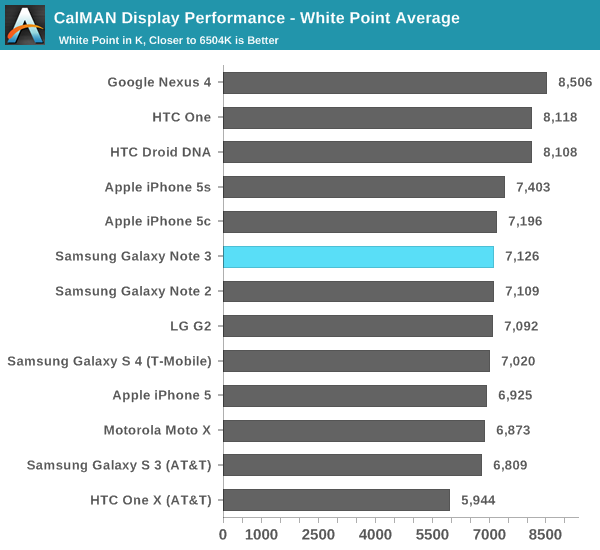
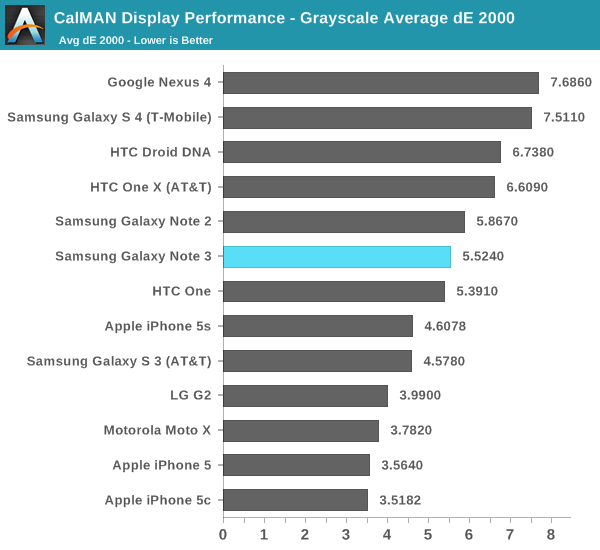
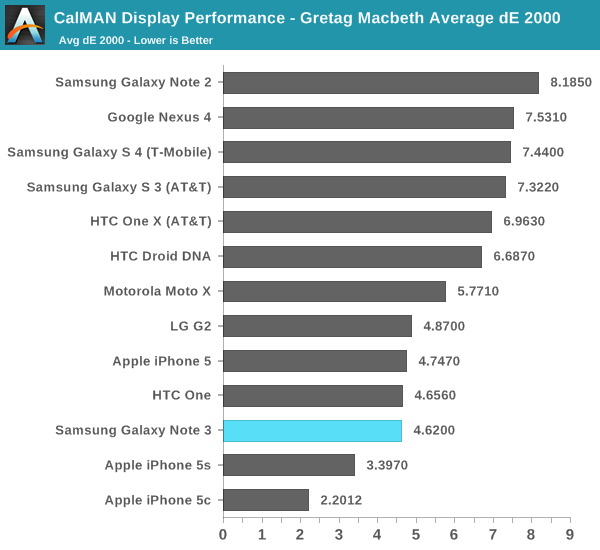
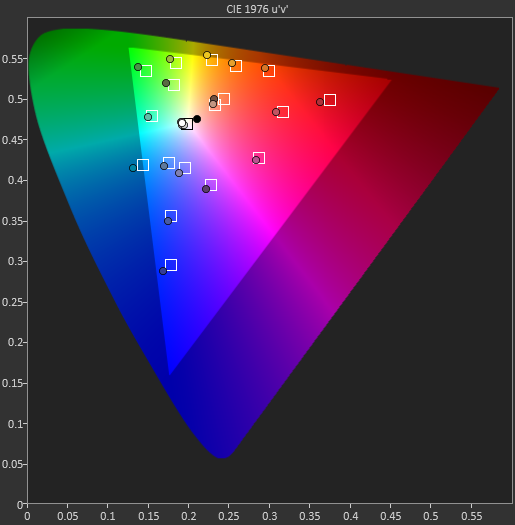
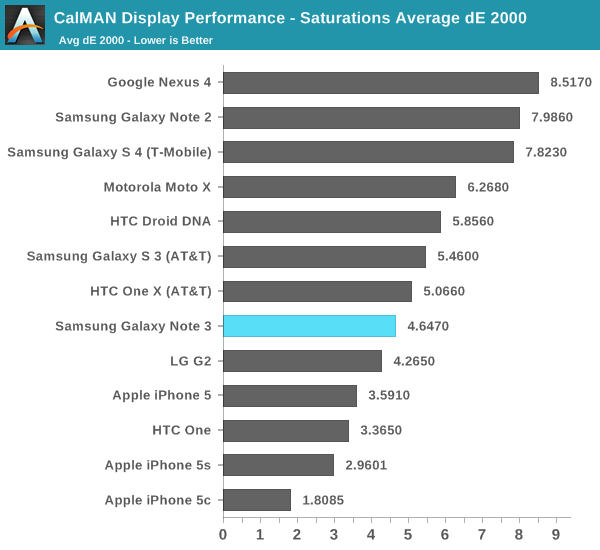



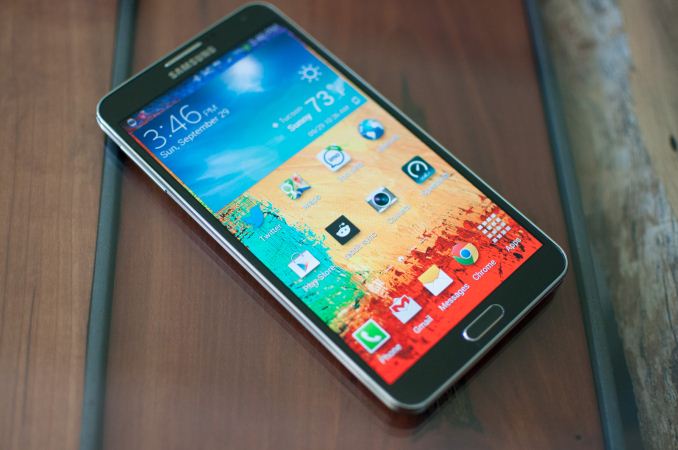
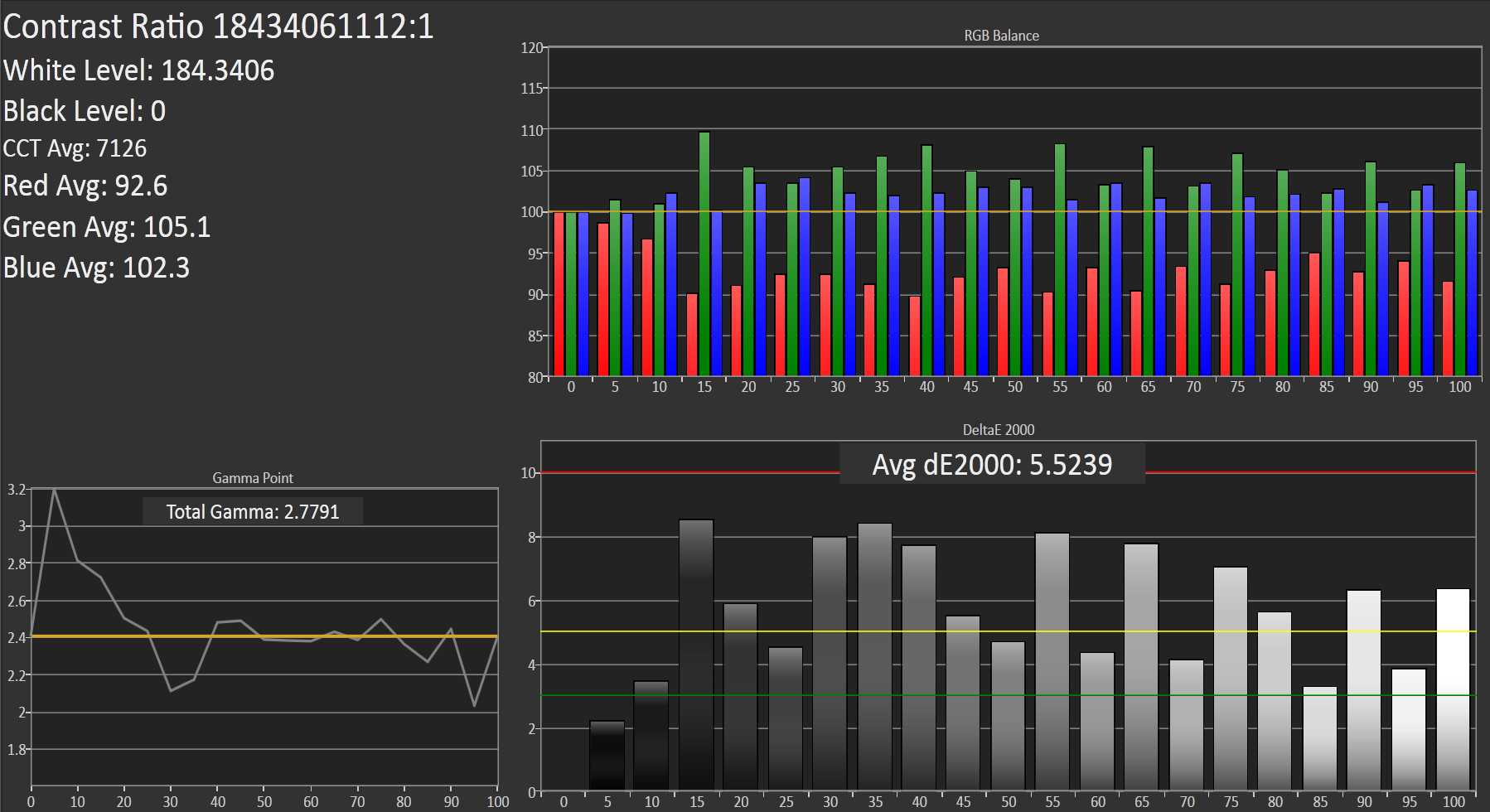








302 Comments
View All Comments
Puddlejumper - Tuesday, October 1, 2013 - link
The disappointment here on this site isn't that Samsung is cheating, the problem is that AnandTech, which some of us considered the site with the most in depth and objective analysis, is aiding and abetting Samsung.Read the review. "More or less the fastest Android smartphone we have tested". "Isn't quite as fast as the iPhone 5s but in same cases it comes close". "Note 3 manages to get the edge over the powerVR G6430 in the iPhone 5s." And worst of all many screen of benchmark date that AnandTech knew was corrupted by Samsung but couldn't be bothered to even put an asterisk bedside the phones that they knew cheated on benchmarks. Instead, the explanation in the comments is that lots of phones are doing it so we will ignore it. Pity LG, Apple, and the rest of the manufactures who tried to play straight. AnandTech is telling them to bad, you should have cheated too.
It's clear why Samsung did it. I'm just extremely disappointed with AnandTech and their defense of their actions.
golemite - Tuesday, October 1, 2013 - link
It's a sad day when Anandtech condones cheating, and let's be honest- publishing poisoned benchmark results is exactly what that is.It used to be that I trusted Anandtech to deliver straight forward and honest reviews, but apparently everyone has their price.
fusoyaii - Tuesday, October 1, 2013 - link
Thanks to whoever mentioned the Ars review. I've never really gone to their site before, but after reading their REAL review of the Note 3, I think I'm switching to them as my main review site. I've been surfing AnandTech for years upon years and always looked forward to reviews here. I read entire articles for tech I'm interested in and knew about the "optimizations" that Samsung does, but it still makes a difference when you post charts/graphs showing unrealistic "tweaked" benchmarks.You guys should look at the Ars review of the Note 3 and learn from what they're doing. Including that video showing the real world lag of the software. Waiting for the Nexus 5 now...
Spunjji - Tuesday, October 8, 2013 - link
Why not read both and make your decisions that way..?tabascosauz - Wednesday, October 2, 2013 - link
The G2 came close to the iPhone 5S's results; it's nice to see the Note 3 take the prize for Qualcomm.I guess the 5S should really get some higher clocks.
ciparis - Wednesday, October 2, 2013 - link
Brian & Anand,I suppose it's obvious from the comments: people expect you to take a stand against cheating.
Unlike you guys, HardOCP was never known for their journalistic prowess. But I have to give them credit: when someone cooked the books, these guys would come unglued. Every aspect of the cheat would be laid bare for all to see, with the community in witness. The results speak for themselves: cheating on benchmarks by altering performance characteristics is not acceptable.
The industry will only do this as long as you let it. Sometimes you have to draw a line, and take a risk. There's no guaranteed outcome. But as a reader, I have come to expect that from you. It's a compliment (I hope).
ciparis - Wednesday, October 2, 2013 - link
One more note, in case it isn't obvious: these published benchmarks on Anandtech are taken as a statement of record.As such, it seems to me that the only thing people should be seeing here are results with no performance adjustments, or where you have defeated the measures -- since the entire point is to establish the relative performance people can expect in actual use.
Blairware - Wednesday, October 2, 2013 - link
I didn't have time to read 18 pages of comments, so I hope that I'm not being redundant in mentioning a mistake in the review. There are only 2 microphones for noise cancelation. the third small hole is for temperature / humidity sensor, just like the 3rd hole on the GS4. I was surprised to see this type of error on Anandtech of all places.jgrnt1 - Wednesday, October 2, 2013 - link
Though I rarely comment, I've been coming to AnandTech for years for objective, in-depth reviews. I have to say I was concerned when AMD "bought into" the site a few weeks ago. It seemed sort of like the big donor who backs a political candidate. The candidate will always claim that no influence was bought by the donation, but it will always be in the back of your mind. Integrity and trust suffer. The minimizing of Samsung's benchmark cheating is a sign that we need to question the integrity of the reviews presented here.Anand, I realize you need to monetize the site. It is your business. You have to pay the bills. However, people have come to your site over the years only partially because of the depth of your reviews and analysis. They have also come because they believed in your integrity. They trusted you. As others have said, by posting the benchmark results in your review without strongly calling out Samsung for cheating, you have rewarded the behavior. People who read the review, but who do not read the comments, will have a much more favorable opinion of the device and of Samsung's business practices than those who go to Ars and read their article. You have let down the people who trust you to be objective.
This morning, I read the Ars article. I was then on Gizmodo and, after reading their review of the Note 3, pointed to the Ars article in my comment. Then I came here, looking forward to seeing the review doing what I knew it would do. I expected an article with a lot more depth than the Ars review, but with the same tone. Cheating is unacceptable and must be called out loudly when it occurs. Instead, there was a brief mention and then the benchmarks were presented with the inflated numbers.
I think you should redo the review with corrected benchmark results and call out Samsung for cheating. Trust in your integrity built this site. Distrust will ruin it.
Squuiid - Wednesday, October 2, 2013 - link
+1